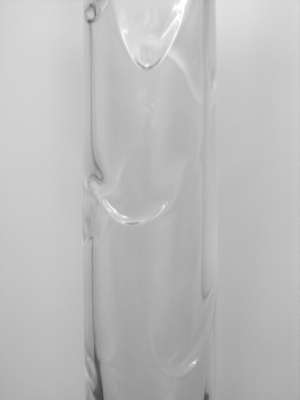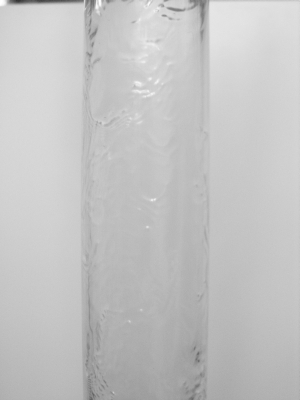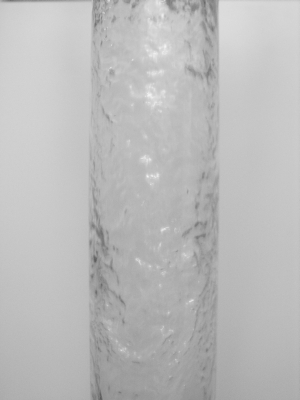The liquid film can be observed in different hydrodynamic conditions. This conditions are characterised by the so called film Reynolds number, which is determined as follows:
Re(film) = 4 G / h
G = mass flow per circumference
h = fluid viscosity
When comparing data in literature care has to be taken what kind of Re(film) definition is used
-
pure laminar
This flow condition can hardly ever be encountered in technical processes. In general pure laminar film flow is present in case the Film Reynolds number is below 30. Only in very viscous flows this flow condition can be encountered. But even than in Literature it is mentioned that wavy behaviour was observed!.

Filmflow ati ReFilm= 10. Already wavy laminar behaviour
Under this flow conditions the Nusselt law for film thickness and subsequent heat transfer can be applied. This means Heat transfer increased with thinner liquid films and therefor smaller Film Reynolds numbers
-
laminar wavy
From a certain mass flow first superficial waves can be observed. They are characterised by a faster velocity compared to the average velocity of the sub layer. The thickness of a wavy laminar fluid film is reduced compared to a pure laminar film. Smaller average film thickness and increased partial turbulence yield a higher heat transfer compared to pure laminar flow conditions.

Film flow at ReFilm= 500
-
turbulent
Apart from the near to the wall laminar sub layer the flow is fully turbulent. In this region heat transfer increases with increased turbulence which means with increased Reynolds number

Filmflow at ReFilm= 5000, fully turbulent